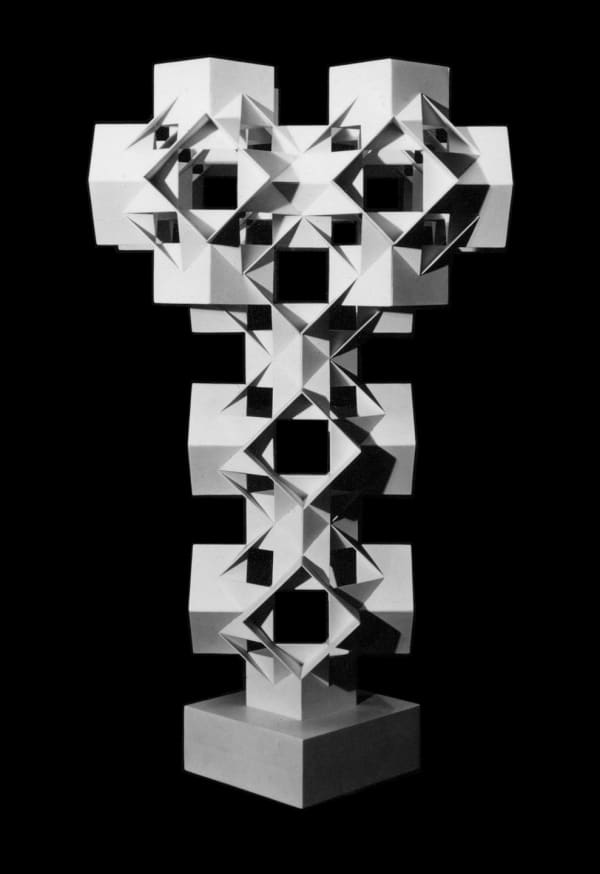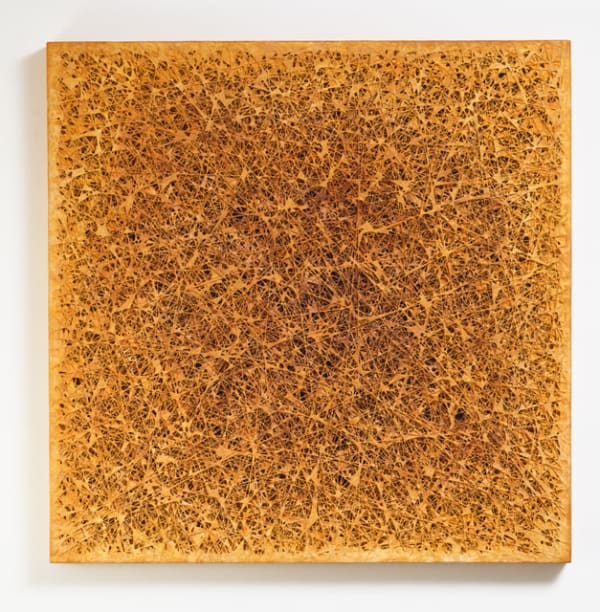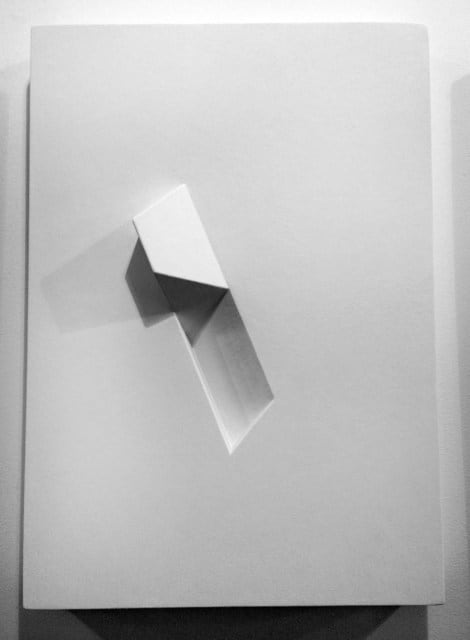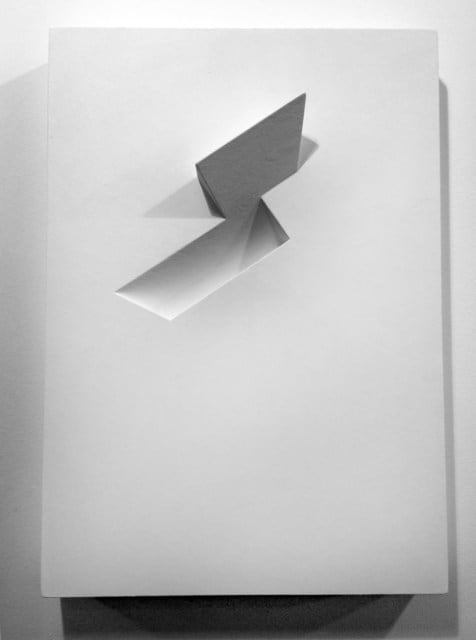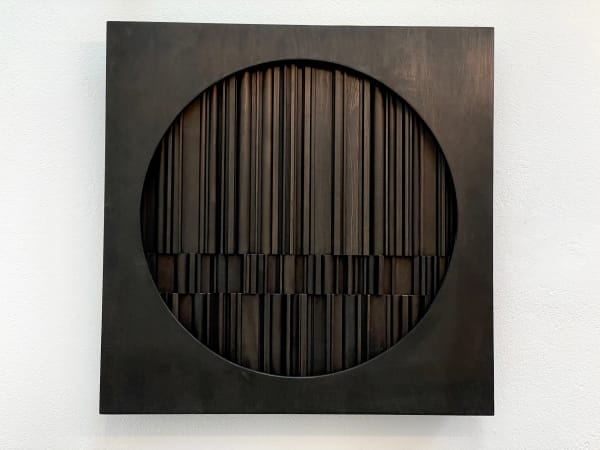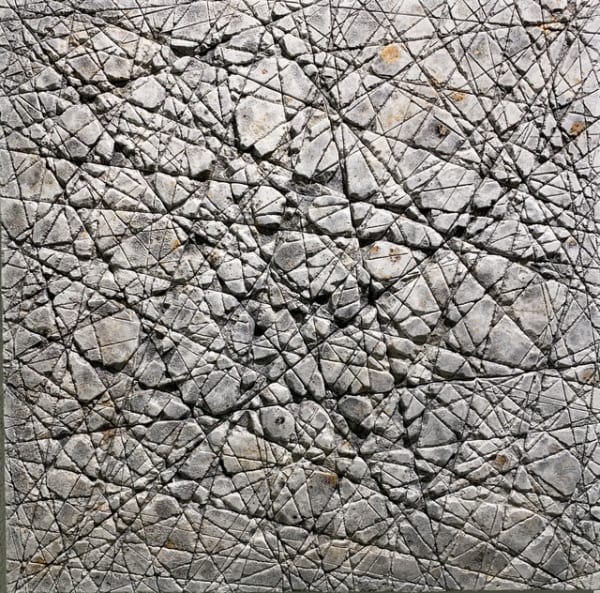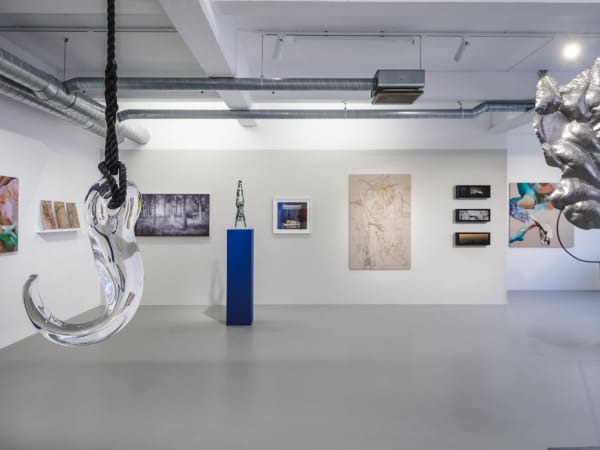David Eisenhauer Swedish-American, b. 1940
“Simplicity and complexity, as every scientist knows, are but two sides of the same coin. That which appears to be uncomplicated can be, in fact, amazingly complex, and vice versa."
“Simplicity and complexity, as every scientist knows, are but two sides of the same coin. That which appears to be uncomplicated can be, in fact, amazingly complex, and vice versa. Artists sometimes address this same duality. In our efforts to make the world a bit more comprehensible, we give form and substance to an often bewildering diversity. The works have evolved from my conviction that art reflects our deepest feelings and conjectures about the nature of the cosmos and our relationship to it. We all express our values and aspirations through our actions and the artifacts we produce. In so doing, some form of simplification, i.e. a structure, system or ordering principle, is usually imposed on an otherwise overwhelming amount of information and possibilities. This reduction process often denies, limits or inhibits diversity in the name of convenience, control or economy” – David Eisenhauer
David Eisenhauer’s aptitude for texture and geometry is based on seven years of architectural studies at the Carnegie Institute of Technology and Princeton University in the US where he took a Master of Fine Arts. In 1969, he left the United States, settled in Sweden, and began working with an architectural studio designing schools and public buildings. In the early seventies, Eisenhauer began experimenting with sculpture and painting in ways that reflected his enduring love of geometry, structure, and the dynamics of unfolding visual experience. With his feet firmly planted in the Bauhaus tradition, David also drew upon his interest in Russian Constructivism, Art Deco, and Dadaism as well as more recent movements like Minimalism and Postmodern architecture.
Always on the lookout for new ideas and materials to explore, his career has concentrated on the sculptural and relatively small-scale possibilities of a number of ‘additive’ construction methods, where the elements of play and trial and error are exploited – along with the sometimes positive surprises of pure chance. Combining simplicity and complexity in visually exciting, suggestive ways have always been the hallmark of Eisenhauer’s work. Eisenhauer was represented by Galleri Konstruktiv Tendens from 1988–1997 with both solo and group exhibitions.
-
 Ursa MajorView more details
Ursa MajorView more details -
 Svart opus nr 3View more details
Svart opus nr 3View more details -
 Svart opus nr 2View more details
Svart opus nr 2View more details -
 Structure nr 1, 1962View more details
Structure nr 1, 1962View more details -
 Sträven nr 2View more details
Sträven nr 2View more details -
 Sträven nr 1View more details
Sträven nr 1View more details -
 SkepnadView more details
SkepnadView more details -
 Sculpture nr 545View more details
Sculpture nr 545View more details -
 Sculpture no. 130View more details
Sculpture no. 130View more details -
 Sculpture no 537View more details
Sculpture no 537View more details -
 SagittaView more details
SagittaView more details -
 Relief #79, 1988View more details
Relief #79, 1988View more details -
 Relief #77, 1988View more details
Relief #77, 1988View more details -
 Relief # 76, 1988View more details
Relief # 76, 1988View more details -
 Relief #78, 1988View more details
Relief #78, 1988View more details -
 Relief #75, 1988View more details
Relief #75, 1988View more details -
 ReliefView more details
ReliefView more details -
 Örnen, 1979View more details
Örnen, 1979View more details -
 Mobil nr 1View more details
Mobil nr 1View more details -
 Meditation nr 1View more details
Meditation nr 1View more details -
 Manick nr 6View more details
Manick nr 6View more details -
 Manick nr 5View more details
Manick nr 5View more details -
 G-104, 2012View more details
G-104, 2012View more details -

-
 CentaurusView more details
CentaurusView more details -
 CassiopeiaView more details
CassiopeiaView more details
-

Summer Show | works by gallery artists
1 - 31 Jul 2025We’re doing something new: for the first time ever, the gallery is staying open all through July! To celebrate, we’re filling the space with a hand-picked mix of works by...Read more -

Springbrunn – A group show with our gallery artists
11 Jan - 17 Feb 2024As spring arrives, a palpable sense of hope fills the air, mirroring the transformative thaw of ice that births life-giving water. The way this water shapes itself and flows forward...Read more




